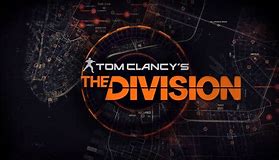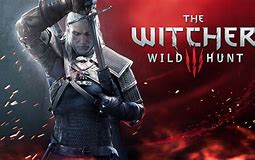i7-11700K
Athlon II X3 460
Multi-Thread Performance
Single-Thread Performance
Need For Speed: Payback
i7-11700K vs Athlon II X3 460 in Need For Speed: Payback using GTX 960 - CPU Performance comparison at Ultra, High, Medium, and Low Quality Settings with 1080p, 1440p, Ultrawide, 4K resolutions
i7-11700K
Athlon II X3 460
Ultra Quality
| Resolution |
Frames Per Second |
| 1080p |
|
| 1080p |
|
| 1440p |
|
| 1440p |
|
| 2160p |
|
| 2160p |
|
| w1440p |
|
| w1440p |
|
High Quality
| Resolution |
Frames Per Second |
| 1080p |
|
| 1080p |
|
| 1440p |
|
| 1440p |
|
| 2160p |
|
| 2160p |
|
| w1440p |
|
| w1440p |
|
Medium Quality
| Resolution |
Frames Per Second |
| 1080p |
|
| 1080p |
|
| 1440p |
|
| 1440p |
|
| 2160p |
|
| 2160p |
|
| w1440p |
|
| w1440p |
|
Low Quality
| Resolution |
Frames Per Second |
| 1080p |
|
| 1080p |
|
| 1440p |
|
| 1440p |
|
| 2160p |
|
| 2160p |
|
| w1440p |
|
| w1440p |
|
i7-11700K
- The i7-11700K has more cores. The benefit of having more cores is that the system can handle more threads. Each core can handle a separate stream of data. This architecture greatly increases the performance of a system that is running concurrent applications.
- The i7-11700K has more threads. Larger programs are divided into threads (small sections) so that the processor can execute them simultaneously to get faster execution.
- For some games, a cpu with a higher clock speed, or in a technical name IPC (Instructions per clock), has better results than other CPU's with higher core count and lower core speed.
- The i7-11700K has a higher turbo clock boost. Turbo Boost is a CPU feature that will run CPU clock speed faster than its base clock, if certain conditions are present. It will enable older software that runs on fewer cores, to perform better on newer hardware. Since games are software too, it is also applicable to them.
- The i7-11700K has a smaller process size. The faster a transistor can toggle on and off, the faster it can do work. And transistors that turn on and off with less energy are more efficient, reducing the operating power, or “dynamic power consumption,” required by a processor.
Athlon II X3 460
- The Athlon II X3 460 has higher Level 2 Cache. Data/instructions which have to be processed can be loaded from the fast L2 and the CPU does not have to wait for the very slow DDR RAM
Compare i7-11700K vs Athlon II X3 460 specifications
i7-11700K vs Athlon II X3 460 Architecture
|
i7-11700K |
Athlon II X3 460 |
| Codename | Rocket Lake | Rana |
| Generation | Core i7
(Rocket Lake-S) | Athlon II X3
(Rana) |
| Market | Desktop | Desktop |
| Memory Support | DDR4 | DDR3 |
| Part# | unknown | ADX460WFK32GMADX460WFGMBOX |
| Production Status | Active | End-of-life |
| Released | Mar 16th, 2021 | May 2011 |
i7-11700K vs Athlon II X3 460 Cache
|
i7-11700K |
Athlon II X3 460 |
| Cache L1 | 64K (per core) | 128K (per core) |
| Cache L2 | 256K (per core) | 512K (per core) |
i7-11700K vs Athlon II X3 460 Cores
|
i7-11700K |
Athlon II X3 460 |
| # of Cores | 8 | 3 |
| # of Threads | 16 | 3 |
| Integrated Graphics | UHD Graphics 750 | N/A |
| SMP # CPUs | 1 | 1 |
i7-11700K vs Athlon II X3 460 Features
|
i7-11700K |
Athlon II X3 460 |
| MMX
SSE
SSE2
SSE3
SSSE3
SSE4.2
AVX
AVX2
EIST
Intel 64
XD bit
VT-x
VT-d
HTT
AES-NI
TSX
TXT
CLMUL
FMA3
F16C
BMI1
BMI2
Boost 2.0 | MMX
3DNow!
SSE
SSE2
SSE3
SSE4A
AMD64
NX bit
AMD-V |
i7-11700K vs Athlon II X3 460 Notes
|
i7-11700K |
Athlon II X3 460 |
i7-11700K vs Athlon II X3 460 Performance
|
i7-11700K |
Athlon II X3 460 |
| Base Clock | 100 MHz | 200 MHz |
| Frequency | 3.6 GHz | 3.4 GHz |
| Multiplier | 36.0x | 17.0x |
| Multiplier Unlocked | Yes | No |
| TDP | 125 W | 95 W |
| Turbo Clock | up to 5 GHz | N/A |
| Voltage | variable | 1.4 V |
i7-11700K vs Athlon II X3 460 Physical
|
i7-11700K |
Athlon II X3 460 |
| Die Size | unknown | 169 mm² |
| Package | FC-LGA1200 | µPGA |
| Process Size | 14 nm | 45 nm |
| Socket | Intel Socket 1200 | AMD Socket AM3 |
| Transistors | unknown | 300 million |
| tCaseMax | 72°C | unknown |
Compare i7-11700K vs Athlon II X3 460 in more games

























































































What to Consider Before Buying a Graphics Card
If you have been planning to upgrade your system by purchasing a new graphics card. Then there are some important factors to consider.
Resolution VS Quality: Impact on Game Performance
What affects game performance? Clarity or Details?
Ultra VS High Quality Settings in PC Games
Every player has a different notion about the ideal setting for PC games. But in most cases, opting for a High quality graphics configuration is the way to go.
What are CPU or GPU Bottlenecks?
Are you getting sudden frame drops? you might have a bottleneck.
What is the acceptable FPS speed for me?
For some games, you can still enjoy great garphics at lower frame rates.
GPU Hierarchy
GPU Compare
CPU Compare
Gaming Laptops
Gaming Monitors
Gaming Headsets
Discussion and Comments
Share Your Comments